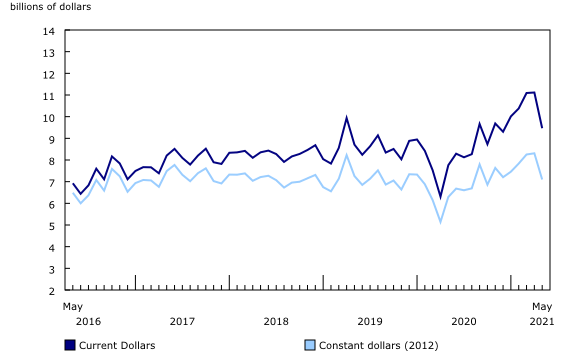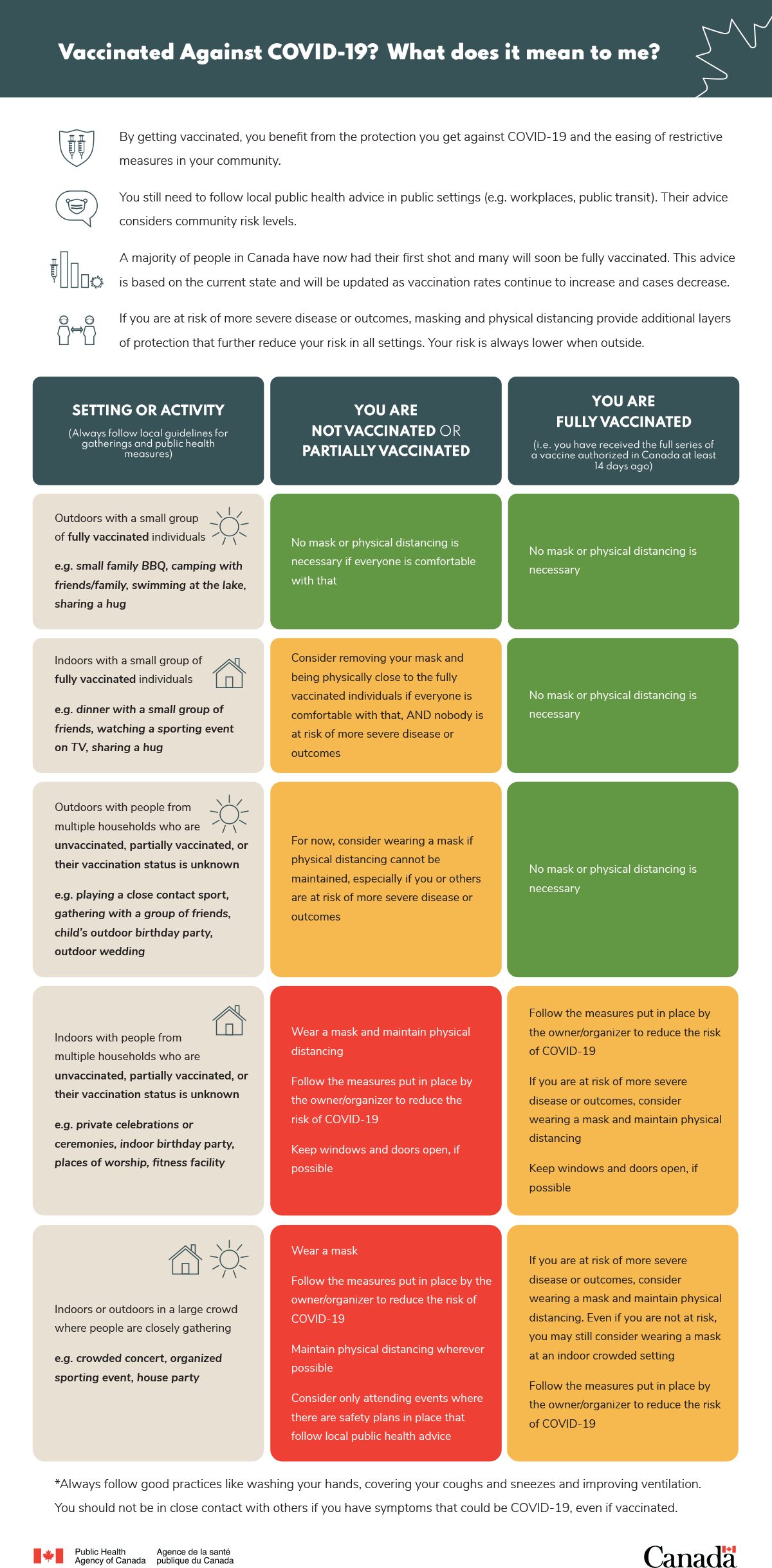
Free rapid COVID-19 testing kits are now available to businesses
Visit gncc.ca/workplace-self-screening-kits to learn more and reserve kits for your organization.
Pay Equity Act will come into force on August 31, 2021
Today, the Minister of Labour, Filomena Tassi, announced that the Government will bring the Pay Equity Act into force on August 31, 2021, and that the final Pay Equity Regulations are now available in Part II of the Canada Gazette.
Under the regime, once the legislation comes into force, employers with 10 or more federally regulated employees will be required to:
- establish a pay equity plan (within three years of becoming subject to the Act) that examines any differences in compensation between positions of equal value that are mostly held by women and those mostly held by men;
- eliminate differences in compensation identified in the plan (within three to five years depending on the size of the employer and the total amount of the wage adjustments due); and
- revise and update the pay equity plan at a minimum of every five years to ensure that no gaps have been reintroduced and to close them if they have.
St. Catharines Enterprise Centre hosting series to assist business in growing online
This week the Enterprise Centre launched Social Media: The Business Edit, a four-part online series providing guides, tutorials and the opportunity for questions and tailored advice, all aimed at assisting entrepreneurs in improving the social media presence of their business. The St. Catharines Enterprise Centre (SCEC) has teamed up with 47 other small business centres in Ontario to form the Covid-19 Recovery Network, developing the new training series as part of its COVID-19 recovery support efforts.
A recent survey of Niagara businesses conducted by Niagara’s Rapid Economic Response Team placed increased online presence as the second highest priority for businesses in Niagara.
Interested parties can register via the SCEC website at investinSTC.ca/SmallBusiness. Those who miss the first instalment can still register for later portions of the series.
Tutorials include: The Building Blocks of Social Media and Business; An In-depth Look at Content Creation; Social Media and Advertising; and The Social Media Storefront.
Government of Canada supports cutting-edge biotechnology company in Welland
Today, on behalf of the Minister of Agriculture and Agri-Food, the Honourable Marie-Claude Bibeau, Parliamentary Secretary Neil Ellis and the Member of Parliament for Niagara Centre, Vance Badawey, highlighted funding of up to $1.48 million for extractX Inc. to develop a mobile, ethanol-based extraction lab for biomass processing.
The announcement took place at extractX’s head offices in Welland, Ontario.
This funding helped extractX complete the final stages of research and development for its proprietary, fully-automated extraction technology. The company’s process uses ethanol, which helps reduce greenhouse gas emissions compared to other processes widely used in the industry. As a mobile unit, extractX is able to bring environmentally-efficient processing facilities to producers across Canada and around the world.
Steve Zorbas named new Welland CAO
The City’s General Manager of Corporate Services, Treasurer and Chief Financial Officer, Steve Zorbas, who has been fulfilling the role on an interim basis, was selected as the new Chief Administrative Officer (CAO) (PDF link) at a Welland City Council meeting last night.
Steve Zorbas has more than 35 years of municipal experience working for the City of Mississauga, Richmond Hill, and Burlington. Mr. Zorbas has built a comprehensive career portfolio in various leadership roles and brings extensive corporate experience with him, including seven years with the City of Welland.
The permanent position became effective today.
Institutions in Kenya to benefit from Gender Equality Policies and Training through support from Niagara College
Technical and Vocational Education and Training (TVET) institutions in Kenya will benefit from gender equality policies and training made possible through a partnership between Niagara College, the National Gender Equality Commission (NGEC), and Sheridan College. This partnership is in collaboration with the Mastercard Foundation and Colleges & Institutes Canada (CICan) to support the Young Africa Works in Kenya TVET program.Young Africa Works in Kenya-TVET is a five-year program (2020-2025) and aims to increase the participation of young Kenyans, particularly women, in market-relevant skills training programs.
The three-year partnership will see Niagara College and Sheridan College assist the NGEC in Kenya to increase women’s engagement in the workforce through the development of processes and policies that promote safe learning environments, principally for female learners.
Ontario government invests $1 million in Christian Labour Association of Canada (CLAC) construction training
The Ontario government is investing over $1 million to help the Christian Labour Association of Canada (CLAC) offer 300 construction workers free, online and flexible training for leadership roles such as site supervisors, lead hands, forepersons and superintendents.
Currently, it can be challenging for construction workers to attend multi-day, in-person training due to health and safety restrictions and heavy workloads on work sites. The new virtual initiative, called the Supervisor Micro-Certification Program, will offer training modules in topics such as health and safety compliance, coaching and mentoring, negotiation, performance evaluation and scheduling. Designed for ease of access, even from mobile devices, this training can be completed at a convenient time and location from anywhere in the province.
Ontario expanding support for addictions treatment throughout the province
The Ontario government is investing $32.7 million in new annualized funding for targeted addictions services and supports, including treatment for opioid addictions. This funding is part of the government’s commitment to invest $3.8 billion over 10 years to implement Roadmap to Wellness, Ontario’s comprehensive plan to build a modern, connected and high-quality mental health and addictions system centred around the needs of individuals and their families.
Government of Canada supports horticultural research at Vineland with $4 million in funding
Today, on behalf of the Minister of Agriculture and Agri-Food, the Honourable Marie-Claude Bibeau, Parliamentary Secretary Neil Ellis announced federal funding of nearly $4 million to support four horticultural research projects at the Vineland Research and Innovation Centre (VRIC).
PS Ellis made the announcement before touring the facility, alongside Chris Bittle, Member of Parliament for St. Catharines and Parliamentary Secretary to the Minister of Environment and Climate Change.
Through the federal AgriScience Program, up to $1.8 million will be invested to support VRIC’s on-the-vine breeding program for greenhouse tomatoes, which is the first of its kind in Canada. The program focuses on developing high-yield varieties with improved flavour and production traits that are adapted to Canada’s climate.
VRIC will also receive up to $877,000 to help make Canadian roses more disease resistant and adaptive, so that they may reach more domestic and international markets. A further $931,000 will support the Centre’s work to discover and evaluate new biocontrol solutions to advance the research on pest management for the Canadian greenhouse sector.
Reading Recommendations
Canada needs to fix its border management now to prevent a fourth wave of COVID-19
The Conversation
Federal officials have repeatedly touted Canada’s border measures during COVID-19 as among the most stringent in the world. Yet the third wave of variant-driven infections, hospitalizations and lockdowns across the country, and growing risks from the Delta variant first detected in India, suggest otherwise.
Unlike Taiwan, Thailand, Vietnam, South Korea, Australia, New Zealand and many other jurisdictions, Canada’s mandatory testing and hotel quarantine measures were only introduced in January and February 2021. By that point, significant and repeated virus importation had already occurred.
Canadian policy remains inconsistent for travellers arriving by air versus land. A Public Safety Canada briefing note from March 10, 2021, reported only seven per cent of travellers entering via land crossings are subject to quarantine requirements. Broad exemptions include cross-border students, technicians working on vaguely defined critical infrastructure, public officials and other categories of arrivals.
Most concerning, data collection and analysis has been incomplete, failing to provide accurate risk assessment evidence to inform border management. Government officials have often claimed fewer than two per cent of total SARS-CoV-2 infections in Canada are associated with international travel. This figure has been used to justify arguments against improved border measures.
Why the delta variant means some Canadians now more ‘at risk’ from COVID-19 than ever before
CBC News
For fully vaccinated Canadians, normal life now feels within reach.
But for those still waiting for a second dose — or skipping their COVID-19 shots entirely — this stretch may be among the most perilous points of the pandemic.
That’s because the months ahead are a transition period, unlike anything we’ve experienced yet. The good news: case counts are nearing rock-bottom even as restrictions are lifting. Still, the fast-spreading delta variant keeps sparking outbreaks and infecting those who aren’t yet vaccinated.
“We’re testing new waters in a way; this virus hasn’t seen a reopened population,” said epidemiologist Caroline Colijn, a Canada 150 Research Chair in Mathematics for Evolution, Infection and Public Health at Simon Fraser University.
“People who are not vaccinated are going to be at a hugely increased risk in the coming months.”
That’s putting the country at a crossroads. Many Canadians have never been more protected. Others have never been more at risk.
Featured Content
Strategic Planning
Pollice Consulting Group
Most companies invest a significant amount of time and effort in a formal annual strategic planning process however, many executives see little benefit from the investment.
Professor Roger Martin (former Dean of the Rotman School of Business at the University of Toronto) said it so distinctly when he said; “there is no doubt that corporate leaders know that strategy is important. Some even find it scary and intimidating because it forces them to confront a future that is undefined and can only be guessed at. Making matters worse is the fact that strategy entails making decisions that explicitly cut off possibilities and options to other elements. The natural reaction in this process is to make strategy planning less daunting by turning the process into a problem that can be solved with tried and tested tools and techniques that offer predictability and make the task less scary.”
Strategic planning is about navigating the road ahead. It’s a carefully crafted plan or method for achieving specific goals over a period of time. It involves business strategy, operational strategies and quite possibly a transformational strategy. For strategy to have a chance of success, it must be “baked” into the products and / or services that a company provides. This may involve communication plans, marketing plans, people plans, process improvement plans, budget plans and operational plans.
Niagara COVID Stats Tracker (June 26)
| December 18 | December 25 | January 1 | January 8 | January 15 | January 22 | January 29 | |
|---|---|---|---|---|---|---|---|
| Reproductive number | 1.4 | 1.8 | 1.4 | 1.1 | 1.0 | 0.7 | 0.9 |
| New cases per 100,000 | 101.2 | 267.3 | 469.8 | 575.8 | 507.1 | 295.5 | 250.6 |
| New cases per day (not including outbreaks) | 60.7 | 178.7 | 311.7 | 376.9 | 325.4 | 182.7 | 145.7 |
| Percent of hospital beds occupied | 97% | 95.2% | 98.2% | 103.2% | 104.5% | 103.6% | 106% |
| Percent of intensive care beds occupied | 78.8% | 77.3% | 87.9% | 87.9% | 90.9% | 89.4% | 93.9% |
| Percentage of positive tests | 6.1% | 15.6% | 28.1% | 28.6% | 26.6% | 21.2% | 16.2% |
These data show the status of the COVID-19 pandemic in Niagara. The Province of Ontario is now using a provincewide approach to reopening, and these data no longer have any influence on Niagara’s restrictions.
Data are drawn from Niagara Region Public Health.
Guide
Reproductive number: the average number of new cases each case causes. If each person infects one other person, the rate is 1; if each person infects two people, the rate is 2. Under the outdated COVID-19 response framework, the target for “green-prevent” was less than 1.
New cases per 100,000: the total number of new cases per week identified per 100,000 population. Under the outdated COVID-19 response framework, the target for “green-prevent” was less than 10.
New cases per day: the total number of new cases identified per day over seven days using a rolling average. This number does not include identified outbreaks.
Percent of hospital beds occupied: the total percentage of the Niagara Health System’s hospital beds currently in use. The average occupancy rate of both acute care beds and total hospital beds in Ontario was 96 per cent in 2018-19. It should be noted that this rate was the highest (worst) in the Organisation for Economic Co-operation and Development (OECD).
Percent of intensive care beds occupied: the total percentage of the Niagara Health System’s intensive care hospital beds currently in use. The average occupancy rate of both acute care beds and total hospital beds in Ontario was 96 per cent in 2018-19. It should be noted that this rate was the highest (worst) in the Organisation for Economic Co-operation and Development (OECD).
Percentage of positive tests: the percentage of COVID-19 tests that were positive. Under the outdated COVID-19 response framework, the target for “green-prevent” was less than 0.5%.
Niagara COVID vaccination tracker (July 7)
Niagara’s most up-to-date vaccination numbers are presented below, along with comparison data from Ontario, Canada, and G7 countries.
Total doses administered in Niagara: 500,891
Total doses administered in Niagara since yesterday: 8,869
Ontario is currently in Step Two of the Roadmap to Reopen.
Step Three of the Roadmap to Reopen will begin when Ontario has vaccinated 70-80% of adults with one dose, 25% of adults with two doses, has positive public health indicators, and has been in Step Two for at least 21 days. Step Two began at 12:01 a.m. on June 30, 2021.
| Percentage of population with one dose | Percentage of population fully vaccinated | |
|---|---|---|
| Niagara | 82.7% | 78.2% |
| Ontario | 84.6% | 79.1% |
| Canada | 84.7% | 78.6% |
| United States | 75% | 64% |
| United Kingdom | 78% | 72% |
| Germany | 76% | 74% |
| France | 80% | 77% |
| Italy | 83% | 76% |
| Japan | 80% | 79% |
| World | 63% | 53% |
Data are drawn from Niagara Region, the Government of Ontario, and Oxford University’s Our World in Data project.






 Niagara Health names its president Lynn Guerriero permanent CEO
Niagara Health names its president Lynn Guerriero permanent CEO